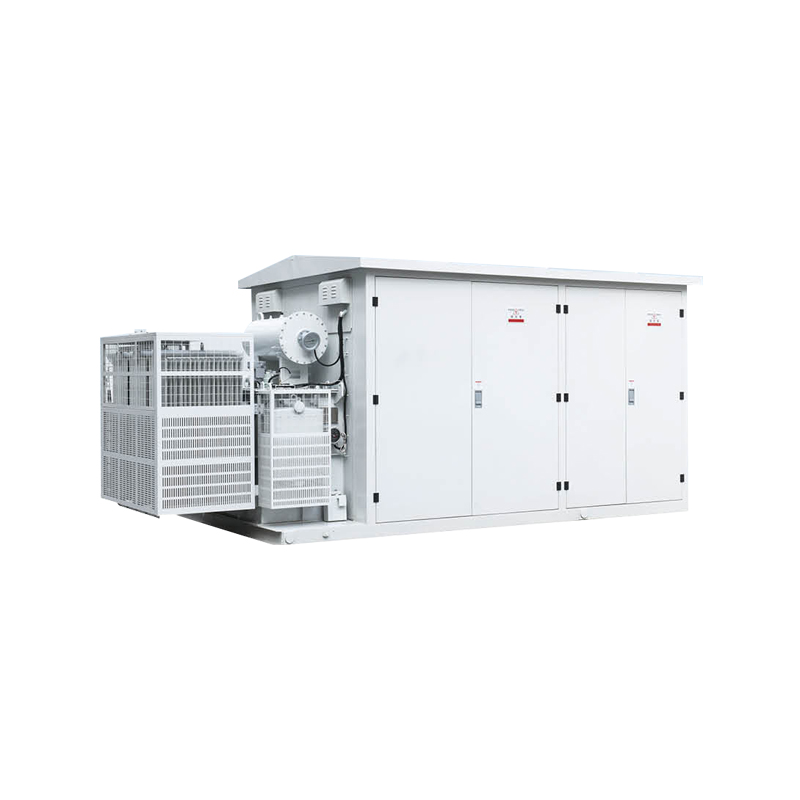Industry News
Applications and Advantages of New Energy Integrated Photovoltaic Prefabricated Cabins
The growing focus on renewable energy and modular infrastructure has led to the development of innovative solutions for energy management. Among these, the New Energy Integrated Photovoltaic Prefabricated Cabin stands out as a flexible and efficient option for various energy applications. Combining photovoltaic (PV) power generation with integrated power distribution and smart control systems, these prefabricated cabins are gaining attention in both urban and remote settings.
A New Energy Integrated Photovoltaic Prefabricated Cabin is a modular, preassembled structure equipped with solar panels, energy storage systems, inverters, and control units. It is designed to support functions such as power conversion, energy monitoring, and grid connection. The cabin itself is usually built from corrosion-resistant materials and is designed for rapid deployment in diverse environments.
The prefabricated nature of these units allows for quick installation, reducing on-site labor and construction time. The photovoltaic panels are typically mounted on the roof or integrated into the walls, enabling the structure to generate electricity independently. Inside the cabin, components such as transformers, batteries, and circuit breakers are arranged for efficient operation and easy maintenance.
These cabins serve a variety of applications in sectors such as:
New Energy Vehicle (NEV) Charging Infrastructure: They can provide a stable power supply to electric vehicle charging stations in parking lots, highways, and commercial areas.
Industrial Parks and Factories: Suitable for decentralized power generation and energy regulation in areas with medium to high energy demands.
Rural Electrification: In remote areas with limited grid access, these cabins can act as standalone power sources, supporting homes, schools, and clinics.
Emergency Power Backup: During grid outages or in disaster-stricken areas, they offer a reliable backup energy solution.
By utilizing solar energy, the cabin contributes to reduced dependence on traditional fossil fuels. This helps lower carbon emissions and supports sustainable energy strategies.
The compact structure integrates multiple systems within a limited footprint. Its modularity allows it to be tailored to different energy capacities and environmental conditions.
Since the cabins are prefabricated, they can be transported and installed quickly, small disruption to existing infrastructure.
Many of these systems come with remote monitoring capabilities. Operators can access real-time data related to power generation, storage, and distribution, improving operational efficiency.
Although the initial investment may vary depending on configuration, the long-term savings in operation, maintenance, and energy costs can be significant. Additionally, the use of renewable energy can qualify for certain incentives, depending on local policies.
Integrating such cabins into energy infrastructure not only enhances reliability but also supports environmental goals. Their use in underdeveloped or off-grid regions helps bridge the energy access gap, contributing to social development and improved quality of life.
Moreover, the reduction in diesel or coal-based energy consumption aligns with global efforts toward cleaner energy transitions. Their low noise, small emissions, and adaptable design further ensure compatibility with both urban and rural settings.
The New Energy Integrated Photovoltaic Prefabricated Cabin represents a forward-looking approach to energy distribution and management. Its ability to combine renewable energy generation with intelligent control in a prefabricated format offers a practical solution to diverse energy challenges.

Next
From Retrofit to Greenfield: Deploying Low Voltage Switchgear in Modern Facilities
<p>In an age of electrification and smart automation, <a href="/product/low-voltage-sw...
View More- PRODUCTS
- New Energy Power Distribution Equipment
- Box Type Substation
- Cable Branch Box/Switch Station
- High Voltage Switchgear
- Low Voltage Switchgear
- Engineering Vacuum Circuit Breaker
- New Energy Vehicle Floor Charging Pile
- Commercial Energy Storage
- Photovoltaic Complete Box
- High Voltage Arrester
- INFORMATION
-
-
Phone+86-13868788848
+86-13356188725 -
Tel+86-0577-88810567
-
E-mail
-
AddNo. 59, Youyi Road, Xinguang Industrial Zone, Liushi Town, Yueqing City, Zhejiang, China
-
- ENQUIRE WITH US
Photovoltaic Module Manufacturer




 English
English  中文简体
中文简体  русский
русский  Español
Español  عربى
عربى 


